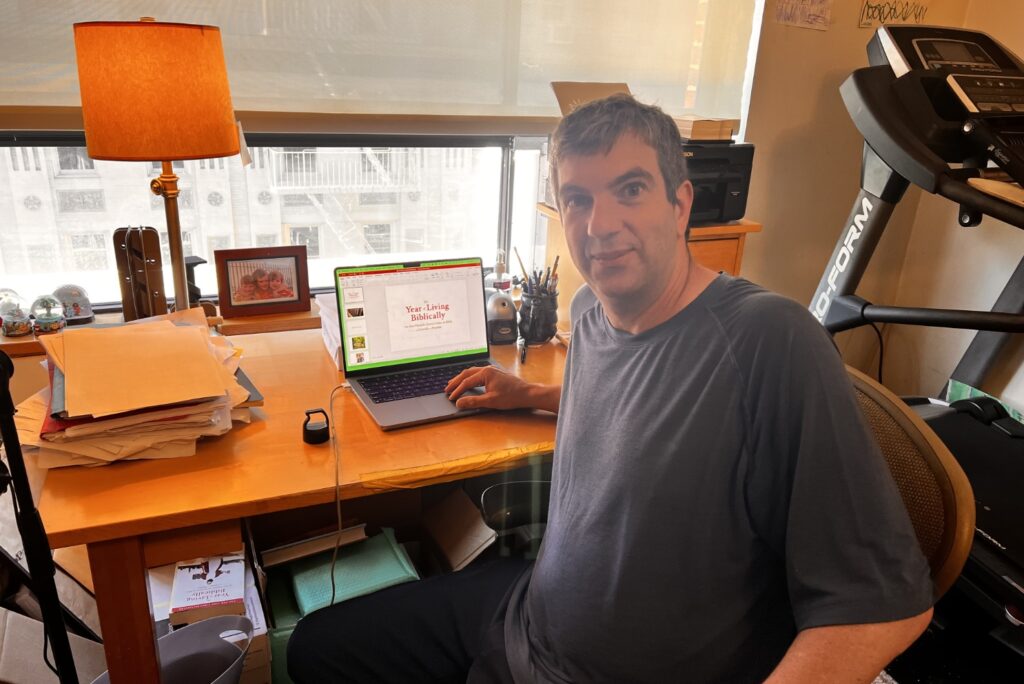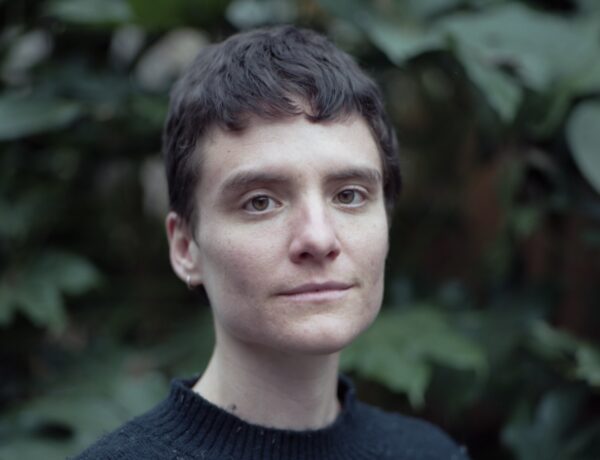A.J. Jacobs is a bestselling author, journalist, lecturer, and human guinea pig. He has written four New York Times bestsellers that blend memoir, science, humor, and a touch of self-help.
His first book, The Know-It-All: One Man’s Humble Quest to Become the Smartest Person in the World, was published by Simon & Schuster in 2004. The memoir spent two months on the New York Times bestseller list and chronicles the 18 months Jacobs spent reading the entire Encyclopedia Britannica in an effort to learn everything in the world.
Each week, we publish a new daily writing routine from a famous author. Subscribe to our newsletter so you don’t miss out!
Hi AJ, great to have you on Famous Writing Routines. We’re really excited to talk to you about your writing routine and process. For those who may not know, can you please tell us a little bit about yourself?
I’m a non-fiction writer who has written several books and given some TED talks (and, perhaps most importantly, was once the answer to 1-down in the New York Times crossword puzzle). My technique is sometimes called “immersive journalism.”
I dive into a topic, and experiment with new ways of living, then write about the good and bad of my experience. I try to find takeaways for myself and the reader that will make our lives better. For instance, I wrote a book called The Year of Living Biblically where I tried to follow the hundreds of rules of the Bible as literally as possible for a year.
I wrote another called Thanks a Thousand where I went around the world and tried to thank a thousand people who had even the smallest impact on my morning cup of coffee – from the barista, to the coffee farmer, to the person who designed the logo for my coffee shop, to the sailor on the ship that transported my coffee from Colombia to New York.
Can you take us through the creative process behind your latest book, The Puzzler?
My latest book is about my obsession with puzzles of all kinds – crosswords, mazes, riddles, jigsaws, you name it. The origin story is unusual. I was writing an entirely different book for three months, and I was miserable.
My agent said, why don’t you write about something you love? He knew I’ve been a fan of puzzles all of my life. So I decided to dive in and see if I could figure out why I love them so much, why do millions of others, and are they a waste of time or do they teach you to be a better thinker and person (hint: the second one!)
As always, I did a ton of research. That’s my favorite part. I read hundreds of books, interviewed dozens of people, and went on adventures – I visited the CIA headquarters to see a sculpture called Kryptos, which contains a secret code that is considered one of the great unsolved puzzles of all time, and I went to Spain to compete with my family as Team USA in the World Jigsaw Puzzle Championships.
I had so much material, one of the challenges was choosing what to include in the book. I tried to include things that would be both entertaining and have a larger point. Plus, of course, I knew I had to include a lot of puzzles for the reader to solve. I often try to think: What would the reader want? And no doubt, the reader would want puzzles in a puzzle book.
What does a typical writing day look like for you?
During quarantine, I radically changed my routine. I used to be a night owl, writing between 10pm and 2am. But I slowly came to realize this was not efficient. My brain was too tired to be efficient.
So I converted to a morning person, going to bed by 11 am and waking up at 7am and getting to work. I think I write more quickly and clearly in the morning, when my brain isn’t as cluttered. Before writing, I do 15 minutes of brainstorming on random topics to get my mind warmed up.
I also use the Freedom software to cut myself off from the Internet, which is crucial to me getting anything finished. In the afternoon, I turn to answering emails and doing interviews.
Do you have a target word count that you like to hit each day?
I don’t have a word count so much as a time count. I pledge to myself that I will write from, say, 8am to 1pm, and I won’t take breaks and I will continue even if I don’t feel inspired.
Discover the daily writing habits of authors like Stephen King, Neil Gaiman, and Gillian Flynn with Famous Writing Routines Vol. 1 and learn how to take your writing to the next level. Grab your copy today!
Can you talk about some of your must-have writing tools?
When I wrote a book on trying to be the healthiest person alive – it was called Drop Dead Healthy – I made myself a treadmill desk. I took a tray and balanced it on the bars of the treadmill, and wrote my book while walking. It took me a few thousand miles. I think I walked the equivalent of going from New York to Phoenix.
And the treadmill desk is one of the things I’ve kept up since that book came out a few years ago. I still write a lot of my emails on the treadmill. I’m going slow, like grandpa speed, maybe 1.5 miles per hour, but I find it keeps me awake and alert. I can’t fall asleep if I’m on the treadmill.
Another writing tool I have is called The Remarkable. It’s a tablet produced by Amazon. It’s expensive – several hundred dollars – but I use it several times a day, so I found it’s worth it. The Remarkable is one of those tablets that allow you to write longhand with a stylus. I use it for brainstorming (I try to brainstorm ideas for 15 minutes every morning) and for taking notes. I love the feel of writing longhand.
The Remarkable has a feature where it is supposed to recognize your handwriting and translate it to typewritten text that you can send to your computer. And maybe that’s great. But honestly, I could never make that feature work. In fact, one of my favorite parts of the Remarkable is that it is totally off-line. I can’t connect to Facebook or Reddit, which means the procrastination temptation is much, much lower.
Whenever you hit a roadblock during a writing session, what are some of the methods you use to get back into the flow of things?
I once wrote an article on writer’s block for a magazine. It was about different techniques that writers throughout history have used. If I remember correctly, Ben Franklin liked to write while taking a bath. Nabokov wrote standing up. Philosopher TK Schiller kept a drawer-full of rotten apples because he believed the smell spurred his creativity. So I tried all these at once – I wrote standing up in a bath with rotten apples. It wasn’t successful.
Instead, for me, the key is to get some momentum going. Just the feeling of putting my fingers on the keyboard is important. So I’ll just start typing stream of consciousness, knowing that I will toss it out later. I might write about what I see – a pigeon on my windowsill, or about what I did last night. I’ll do this for a while, maybe 20 minutes, and then I’ll feel warmed up. I’ll have the momentum to actually write my book.
What does your writing workspace look like?
I’ve got my desk (a glass tabletop) right next to my treadmill, and I alternate between the two.
I like to have some objects scattered around, what a friend of mine calls a ‘mental jungle gym,’ stuff to keep my mind playful. So I have a couple of Rubik’s Cubes and Japanese puzzle boxes on the desk. I also have issues of The Week magazine, since I use that as a jumping-off point when I do my daily brainstorming.
And finally, my laptop screensaver consists of a rotating series of 10,000 photos from my life. I like to remind myself of good (and weird) parts of my life as a way to battle the blues.

Affiliate disclaimer: Some links on this website are affiliate links. We may earn a small commission if you make a purchase through these links, but only promote products we truly believe in. We disclose affiliate links and give honest reviews.



No Comments